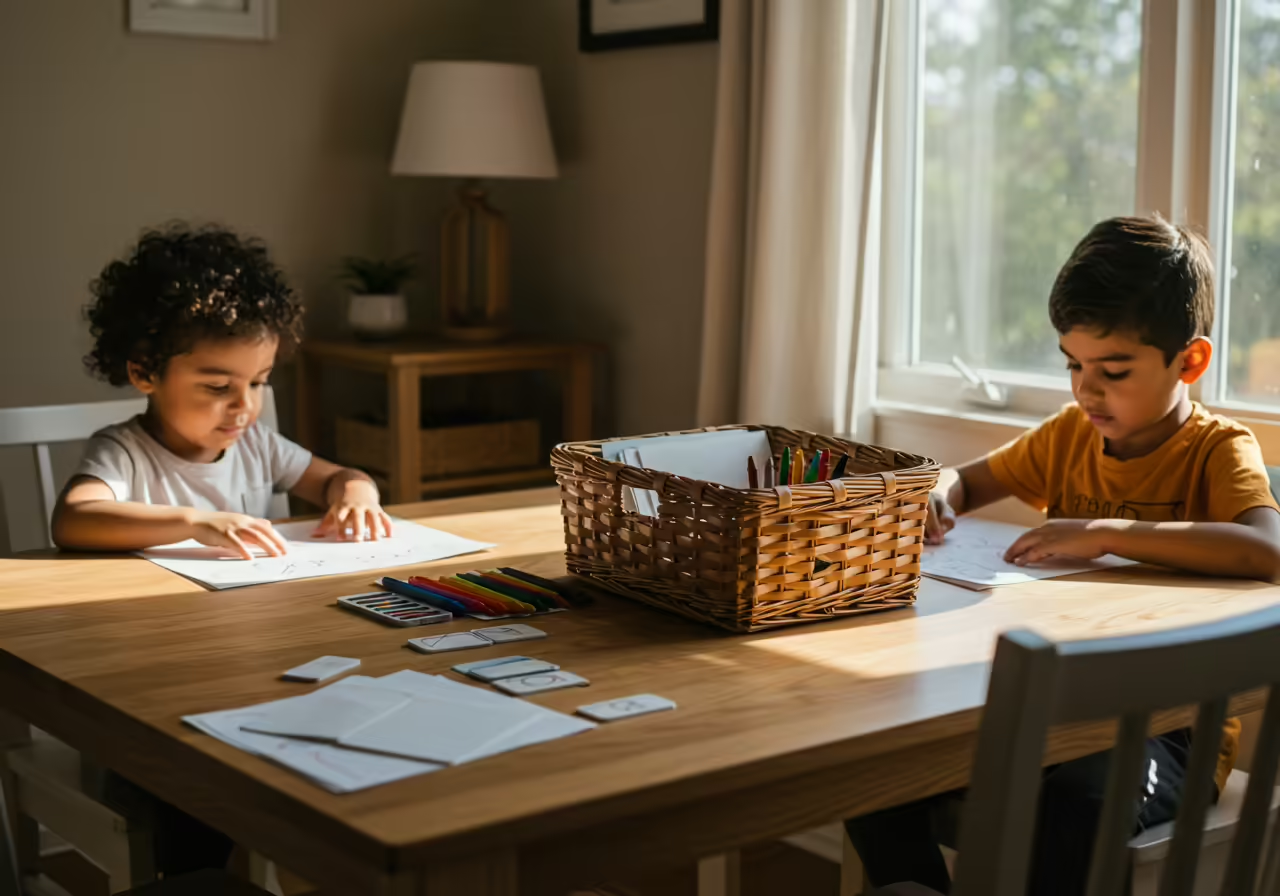Have you ever noticed that your child seems more focused and engaged during those peaceful morning hours? There’s actually fascinating science behind this observation that goes far beyond simply avoiding afternoon crankiness.
Recent neuroscience research has uncovered compelling evidence about when our children’s brains function at their absolute best for learning – and the findings might surprise you with how precisely they align with what many families have discovered intuitively.
The “Morning Brain” Advantage
A groundbreaking 2020 study published in Social Cognitive and Affective Neuroscience used real-world brain monitoring technology with students during their regular school days. The results were remarkable: mid-morning emerged as the optimal learning window, with children showing their best performance and highest attention levels.
Here’s what happens in your child’s brain during those precious morning hours:
Enhanced Working Memory: As body temperature gradually rises through the morning, children’s working memory – their ability to hold and manipulate information – reaches peak performance between 10:00 AM and 2:00 PM.
Improved Attention Networks: Brain scans reveal that cortical responses follow natural circadian rhythms, with the attention networks firing most efficiently during late morning hours.
Reduced Cognitive Load: Morning hours show the lowest “alpha power” in brain activity, which researchers interpret as indicators of higher sustained attention and less mental fatigue.
Why This Matters for Family Learning
Understanding your child’s natural learning rhythms can transform how you approach educational activities at home. Rather than fighting against biological patterns, you can work with them to create more effective and enjoyable learning experiences.
Think of it this way: just as we’ve learned that different plants thrive with morning sun versus afternoon shade, children’s minds have their own optimal “growing conditions” throughout the day.
The research reveals that children consistently perform worse during very early morning hours compared to mid-morning sessions. This means that 8:00 AM math drills might actually be working against your child’s natural cognitive patterns, while 10:30 AM exploration activities align perfectly with their brain’s readiness to learn.
Beyond Individual Learning: The Social Brain Connection
What makes morning learning even more powerful is how children’s brains respond to social learning during these optimal hours. Research on peer teaching shows that children are more accurate and confident after discussing concepts with siblings or peers, especially during high-attention windows.
When older siblings naturally explain ideas to younger ones during morning activities, they’re not just sharing knowledge – they’re creating what researchers call “natural scaffolding.” The teaching child clarifies and reorganizes information in their own mind, while the learning child benefits from explanations that come from someone closer to their own developmental level.
The Routine Connection
Morning learning effectiveness isn’t just about timing – it’s also about the psychological security that comes from predictable routines. Educational research demonstrates that routines provide the two key ingredients necessary for optimal learning: strong relationships and meaningful repetition.
When children know what to expect during their morning learning time, their brains can focus entirely on absorbing new information rather than processing anxiety about what comes next. This creates what attachment researchers call a “secure base for learning” – a emotionally safe environment where deep engagement becomes possible.
Putting Morning Science into Practice
So how can you harness this research in your own home? The key is creating consistent, engaging morning learning opportunities that respect your child’s natural cognitive rhythms – and this is exactly where many families have discovered the power of intentional morning routines.
Start Small and Observe: Pay attention to when your child naturally seems most alert and curious. For most children, this sweet spot occurs 2-3 hours after waking, once they’ve had breakfast and their body temperature has begun its natural rise.
Embrace Natural Learning Moments: Whether you’re reading together, exploring hands-on activities, or watching your child discover something independently, morning hours provide the optimal window for deep engagement and lasting learning.
Focus on Engagement Over Structure: A 20-minute morning learning session during your child’s optimal attention window – whether spent snuggled together with books or watching them explore fascinating materials – will be far more effective than an hour-long afternoon struggle.
The Beautiful Intersection of Science and Family Wisdom
What’s remarkable about this research is how it validates what many families have discovered through simple observation and experimentation. Parents worldwide have intuitively gravitated toward morning learning routines, not because they read neuroscience studies, but because they noticed their children thriving during these times.
This represents something beautiful: the convergence of family wisdom and scientific understanding. When we create learning opportunities that honor both our children’s natural rhythms and our family relationships, we’re not just following educational trends – we’re applying evidence-based practices that support optimal development.
Creating Your Morning Learning Environment
The research suggests that effective morning learning environments share several key characteristics: they’re predictable enough to create security, engaging enough to maintain attention, and flexible enough to adapt to each child’s developmental needs.
Whether your family gravitates toward structured activities or prefers more organic exploration, the timing principle remains consistent: those morning hours between full wakefulness and pre-lunch fatigue represent a precious window of optimal learning potential.
Ready to explore how to create your own science-backed morning learning routine? Check out our complete guide to What Is a Morning Basket? to discover practical ways to implement these research findings in your family’s daily rhythm.
Related Reading:
- What Is a Morning Basket? - Practical implementation of morning learning principles
- How to Create Your Own Morning Learning Routine - Step-by-step family-friendly strategies


